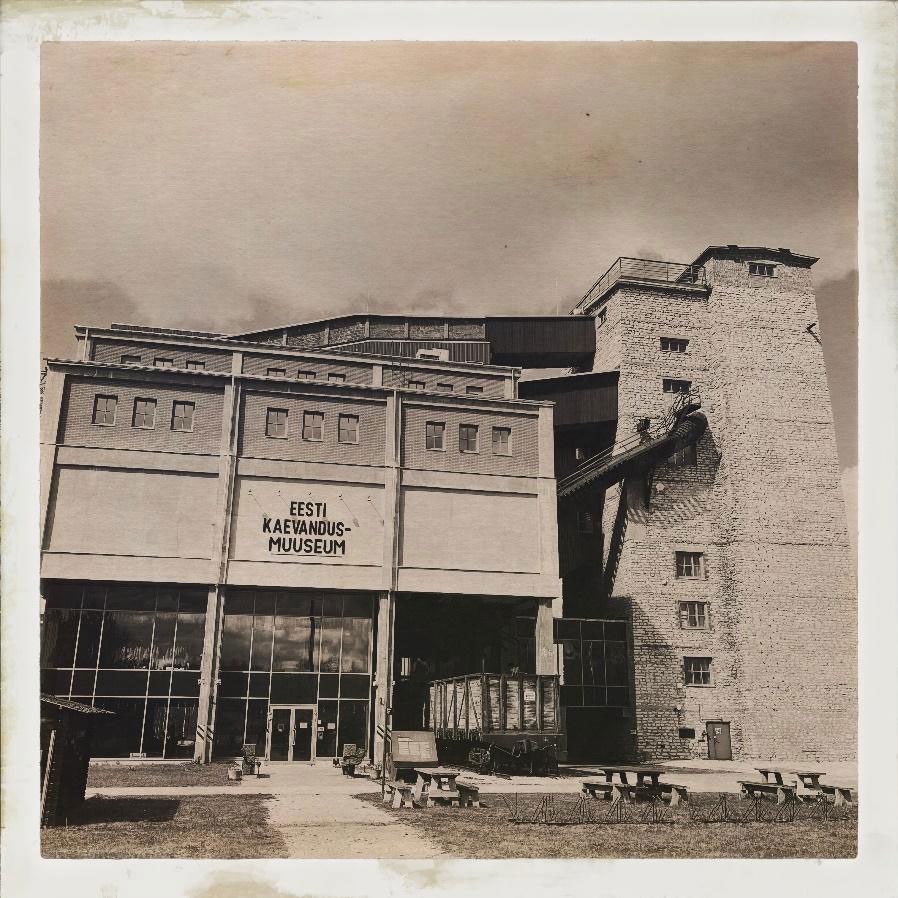The Faces of Mining

Image Credit: Main Entrance to Eesti Kaevandusmuuseum (Estonian Mining Museum) © Sarah Comyn 2023
In the context that I study, contemporary Argentina, the face of mining is the anonymous face of multinational corporations, like Barrick or Shandong. Mining belongs to the world of neo-extractivism: an excessive, invasive exploitation of primary resources, which, in neo-colonial fashion, are largely extracted for exportation to the Global North at the expense of the local communities’ health and livelihoods. Local communities can become fractured between pro-mining (those who believe mining to be a necessary evil for a perpetually failing economy) and anti-mining (those who believe some things cannot be sacrificed in the name of economic progress). Other local industries and economic activities wither under the totalising power of the mine. Freshwater sources and ecosystems are endangered or destroyed. Rivers and lakes become contaminated with cyanide, mercury and other toxics. Communities are forced to relocate. Gold – and it is often gold – is seemingly extracted at the expense of all else.
Argentina as a “mining country” was an imaginary that was fabricated and promoted since the 1990s by a neoliberal government, which pursued the deregulation and privatisation of the economy. The almost tax-free invitation to multinational mining companies was issued under this neoliberal frenzy, where profitability is the only value that reigns supreme. Under recent left-wing governments, however, the situation has not changed, forcing some of us to question the ethical backbone of the so-called progressive political tide in Latin America. The rapid, aggressive and continuous exploitation inherent to these expansive projects means that communities often perceive the socio-environmental damages incurred as far more significant than the benefits reaped. And it has been largely the local communities directly affected by open-pit, large-scale mining who have led the charge against this virulent form of extractivism. In my research on the visual culture of environmental activism in Latin America, I study mining through the eyes of the activists, who continue to stand their ground and proclaim that “water is worth more than gold”.
During our research encounter in Estonia, I was shown a different face of mining. Mining was no longer a multinational company, but a miner, whose grandfather, father and brothers had also been miners. During our visit to the Estonian Mining Museum in Kohtla-Nõmme, located in the region of Ida-Virumaa, Jüri Sala accompanied us around the former oil shale mine, which was closed down in 2001: he explained the different extraction techniques, he demonstrated the various equipment used, and recounted the difficult life he had as a miner. For example, Jüri remembered how he was forced to work with strong migraines for six months, which had resulted from an occupational accident in the mine, because his employers would not get paid their health and safety bonus otherwise.
In Estonia, however, these tales of exploitation in the mining industry are paired with a sense of both individual and collective identity. Ida-Virumaa, an eastern region bordering Russia, has a long history of oil shale mining spanning over more than a hundred years. Even if the Soviet Union undoubtedly was a key actor in pushing the mining industry in Estonia during soviet rule, our visit to the region revealed a more deeply-rooted history. The curators of the art collection of the Estonian Oil Shale Museum in Kohtla-Järve, Linda Kaljundi and Tiina-Mall Kreem, found prints representing oil shale mining from the 1920s and 1930s, before the Soviet Union annexed Estonia in 1944. The prints represent idealised versions of the industrial landscape, as if celebrating oil shale as the promise of development for an Estonia that had gained independence from the Russian Empire in 1918, after conflict with the newly-formed Bolshevik regime.
Oil shale mining in Estonia, however, decreased towards the end of the twentieth century, shrinking populations and cities as a result. The landscapes of Ida-Virumaa reflect this decline, often showcasing abandoned towns, ruined buildings and rugged ground where nature is overdue to grow again. Mining, I suppose, always has an expiration date. Its promises of progress are bound to lead to disappointment sooner or later: what is extracted can never be regenerated to be extracted again. Nonetheless, despite this inevitability, Estonia showed me the complicated yet meaningful connection that can exist between mining and identity, and that mining can adopt many faces, depending on whose perspective we are willing to see from.
– ERIKA TEICHERT, University College Dublin